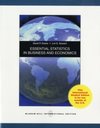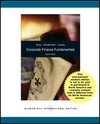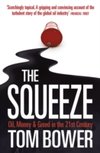
-
 Anglický jazyk
Anglický jazyk
On the credibility issue of exchange rate target zones
Autor: Matthias Rau-Göhring
Inhaltsangabe:Zusammenfassung:
Währungskrisen, wie die des Europäischen Währungssystems (EWS) 1992, können noch immer nur unzureichend vorausgesagt werden. Es wird jedoch anerkannt, dass die Glaubwürdigkeit eines jeden Währungssystems ausschließlich...
Viac o knihe
Na objednávku
35.19 €
bežná cena: 39.10 €
O knihe
Inhaltsangabe:Zusammenfassung:
Währungskrisen, wie die des Europäischen Währungssystems (EWS) 1992, können noch immer nur unzureichend vorausgesagt werden. Es wird jedoch anerkannt, dass die Glaubwürdigkeit eines jeden Währungssystems ausschließlich endogen bestimmt wird, d.h. durch Interaktion der einzelnen Akteure an den Wechselkursmärkten.
Die vorliegende Arbeit untersucht, ob ein bestimmtes Glaubwürdigkeitsmaß, eingeführt von Avesani, Gallo und Salmon (1995), geeignet ist, die große EWS Krise 1992 vorauszusagen. Dabei handelt es sich um ein dynamisches Spiel, in dem die beiden Akteure (Zentralbank und Finanzmarkt) miteinander interagieren und damit die Glaubwürdigkeit des Systems ¿aushandeln¿. Es wird gezeigt, dass o.g. Glaubwürdigkeitsmaß ein geeigneter Indikator für Währungskrisen darstellt, was empirisch anhand des französischen Francs, der italienischen Lira und des niederländischen Guldens nachgewiesen wird.
Introduction:
The objective of the present study is to present the literature of exchange rate target zones and to explore empirically the Avesani-Gallo-Salmon credibility measure for selected currencies belonging to the Exchange-Rate Mechanism (ERM) of the European Monetary System (EMS). In the past decade the empirical literature on real world target zones mushroomed considerably, but still, its overall significance in explaining strains in the relevant foreign exchange markets remains relatively low. In this context, I will explore whether the Avesani-Gallo-Salmon (1995) credibility measure demonstrates more power than earlier studies in the analysis of the 1992/3 EMS crisis.
It is not my intention to pursue a normative analysis whether flexible or fixed exchange rates or intermediate regimes are superior to one another in terms of their economic implications. This question is beyond the scope of my analysis.1 Given that target zones are applied frequently in the real world, I purely want to figure out, whether their application is sensible on grounds of a firm commitment of the policy-makers.
Exchange rate bands have been discussed widely after the breakdown of the Bretton Woods System in 1973. Although experiences with the fixed exchange rate regime were disappointing in the 1960s, increased volatility and/or overshooting of the exchange rates in the 1970s let economists doubt the famous argument by Friedman (1953) that speculation would stabilize exchange rate movements in the floating system. McKinnon (1976) reckoned that [...]
- Vydavateľstvo: Diplom.de
- Rok vydania: 2003
- Formát: Paperback
- Rozmer: 210 x 148 mm
- Jazyk: Anglický jazyk
- ISBN: 9783838667355












